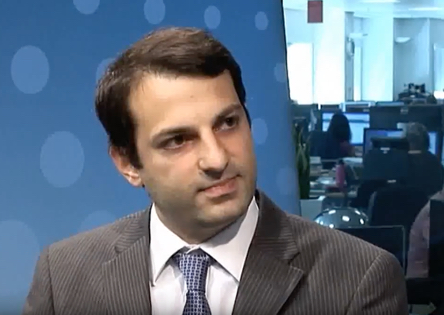2015’s most accurate gold price forecaster turns huge bull

On Friday, gold made the most of a weaker US dollar and expectations of an extended period of ultra-loose monetary policy and negative interest rates around the globe, jumping to a two-week high.
Gold futures in New York for delivery in December, the most active contract, added 1% to a midday high of $1,357.90 Gold hit a near two-year high earlier in July and year to date the metal has gained 28% or just shy of $300 an ounce.
Rising real interest rates raises the opportunity costs of holding gold because the metal provides no yield and therefore the price should decline. Higher rates also boost the value of the dollar which usually move in the opposite direction of the gold price.
Prolonged and messy negotiations between the UK and Europe could lead to further uncertainty and potentially hit the economy of both areas. This scenario is likely and gold prices could benefit.
Since the global financial crisis the relationship between interest rate expectations and the gold price has only become tighter and these factors have created a bullish environment for gold and is the main reason many analysts are upping their forecasts for the metal.

Bernard Dahdah of Natixis speaks to 4-traders in 2013. Image: YouTube
The winner of the 2015 London Bullion Market Association long running forecasting competition, Bernard Dahdah of French investment bank Natixis, got it exactly right last year with a forecast of an average $1,160 gold price in 2015.
This year Dahdah’s was one of the most bearish of the 35 analysts polled predicting a low of $900 and a high of $1,300 and an average of $970 for 2016 with the decline ascribed to expectations of a series of US rate hikes, a strong dollar and continued outflows from ETFs.
Needless to say, events haven’t exactly played out this way. In the LBMA’s latest Alchemist publication Dahdah gets a chance to revise his predictions – marking it up by almost a third.
With “the relationship between the opportunity cost of holding gold and interest rates becoming ever more apparent” and the likelihood of a Fed hike only in December (partly due to uncertainty created by Brexit), Dahdah now sees gold averaging $1,275 and ounce for 2016 with the price reaching a high of $1,400 some time before the end of the year:
It is not as much about the UK leaving the EU that is impacting the decision by the Fed (or the rise in the price of gold), but the future of the European project and the economic stability of the region that is of great concern.
Two risks (upside and downside) face gold prices. Although so far this year, additions of gold in physically backed ETPs have been very supportive of the price of gold, should the Fed raise rates earlier than expected, we could see sharp outflows. The amount held in physically backed ETPs is substantial – it is equivalent to 45% of 2015’s total supply of gold.
Just as quickly as physically backed ETPs turned into a source of demand for the metal, investors could turn it into a source of supply. Prolonged and messy negotiations between the UK and Europe could lead to further uncertainty and potentially hit the economy of both areas. This scenario is likely and gold prices could benefit.
More News
{{ commodity.name }}
{{ post.title }}
{{ post.date }}




Comments
chester kendra
Currency is paper backed bydebt and the ability to pay the debt, This is increasingly unlikely without devaluation, I’ll put my fiat money into Gold which is free of debt and has value.